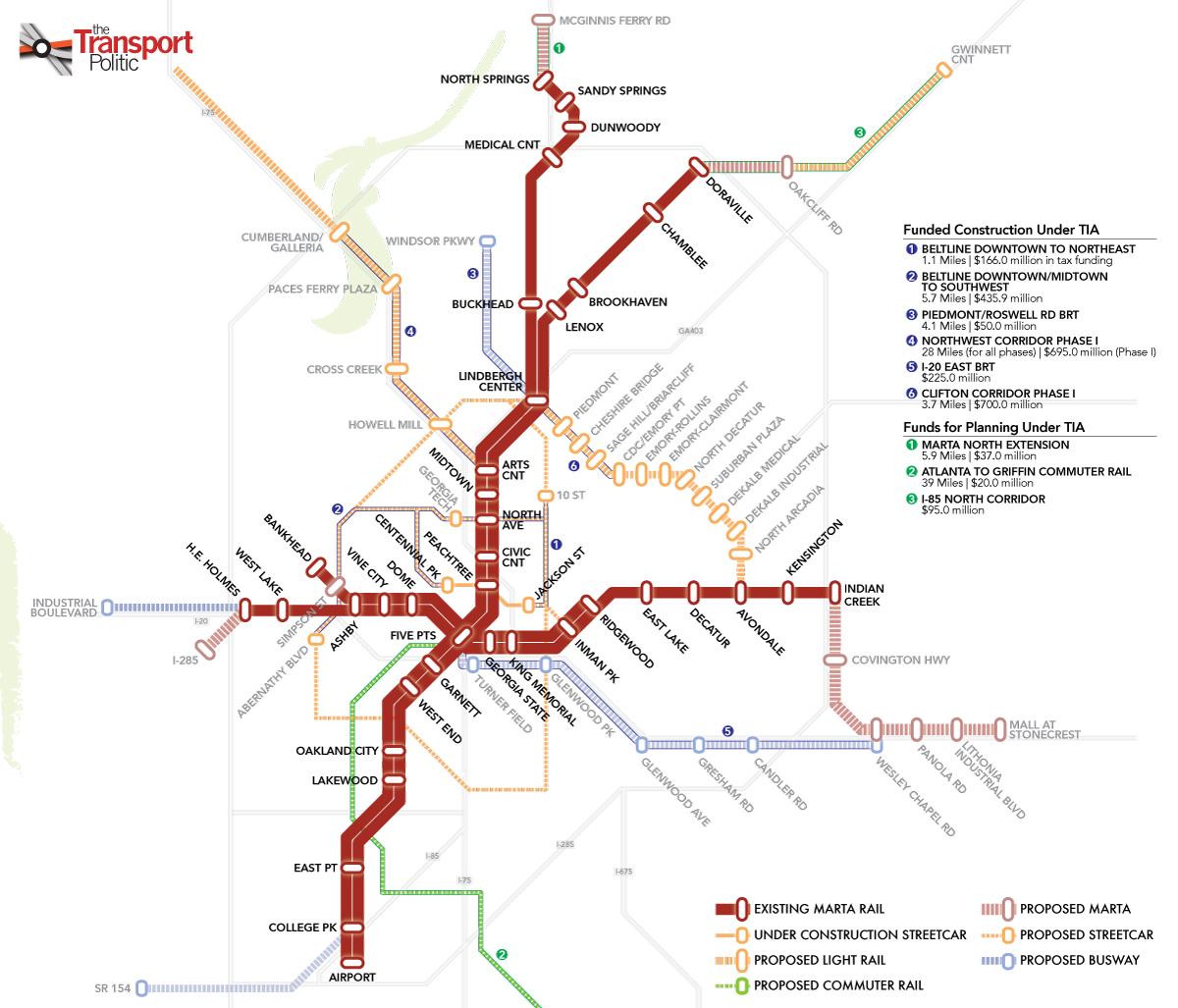
Most of this boom in population is caused by the anticipated growth of the region’s business expansion and economics. Moving to the present, in 2022, Atlanta has eventually grown to be a high-density area serving more than 6 million people and is the ninth-largest metropolitan area in the U.S. Because of this, the core transit system of Atlanta only focused on two counties (Fulton and DeKalb) for nearly 40 years up until 2014, leading to MARTA not living up to city leaders’ vision of making Atlanta an economically booming city (Bruns, pg. However, some counties, such as Gwinnett and Clayton, didn’t want to participate due to the predominantly white suburban counties thinking the link from the rail would bring large numbers of blacks into their community (Keating, pg.

The rail system went through many construction phases, and it all came together in 1971 through counties’ support from Dekalb and Fulton. Once the rail system construction was in motion, San Francisco’s Area Rapid Transit was used as a model, and consulting firms from that project were hired to work on MARTA. White leaders eventually reached out to the black community, and through workmanship, they created a biracial coalition that ended up making MARTA from an idea to reality (Keating, pg. However, it failed in 1968 due to opposition from black political leaders as they felt that the rail service favored white areas more than black areas. A rapid rail system referendum was created to add to ballots of certain counties. He proposed a six-point program for the city’s growth and development due to “Atlanta’s impending transportation crisis, and it distinguishes the city from its regional peers” (Georgia Encyclopedia). The first taste of conflict with getting MARTA built was during Ivan Allen Jr years as mayor of Atlanta.īefore his action as mayor, Allen was the Atlanta Chamber of Commerce president and helped vision the rail transit system. Unbeknownst to the people planning the rail, the train transportation would be infiltrated with politics on every step they would take. However, the plans for a rapid rail system persisted due to the city leaders wanting to make Atlanta a modern big city and pushing that it would draw high-density development to the stations. Two years later, another study explained that “rapid rail did not make sense economically because of Atlanta’s low population density” (Keating, pg. The formulation of a rail system in Atlanta was dismissed by studies in 1967, signifying bus systems would serve better than a more expensive rail system.

To see how MARTA got to serve nearly 400,000 passengers a day and became the eighth-largest transit system in the United States (Georgia Encyclopedia), we must travel back to the early 1960s, where it all began.ĭuring the redevelopment of downtown Atlanta, a rapid-rail system was initialized. MARTA, an acronym for Metropolitan Atlanta Rapid Transit Authority, has created a powerful influence on Atlanta’s history and its economics.


 0 kommentar(er)
0 kommentar(er)
